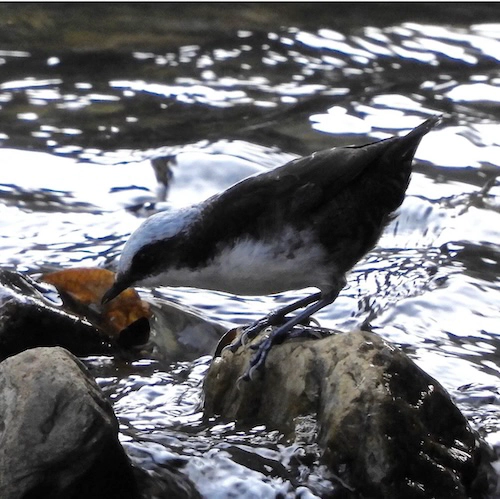Water
We’ve been writing about simple stuff: the weather, the trees, the river, etc. We’re just realizing that, despite not being intentional, the topics that inspire us revolve around what we see on a daily basis in the reserve, and those simple things tend to take a deeper meaning here. Perhaps when we’re in the city we don’t pay too much attention to how a tree grows or which plant species grow on the closest park or what’s the bird that wakes us up in the morning. At Yátaro, however, things are different: we have no distractions, we are not in a hurry to get somewhere and believe it or not, this lack of stimulus helps us focus on those apparently “little” things. This week’s topic is water, specifically, the rivers, streams and springs that surround us.
One caveat is that none of the water bodies we’re writing about here is used for our consumption. To do that in Colombia, we’d need a special permit. So basically all the water that you’ll read about today flows freely down the Andes eastern slope, eventually gets to the “Llanos Orientales”, a large savannah region on the most eastern part of Colombia, and then flows into the Orinoco river in the Colombo-Venezuelan border. The water supply for our consumption comes from pure, non-treated, water-springs managed by the “acueducto veredal” which is community managed and ran.
The river
The river is not a proper river but what we call a “quebrada” in Spanish which is smaller and flows through a narrow gorge. Still, throughout the whole year we get a constant water flow and during winter it can actually get very fast-flowing. We’ve been lucky to spot beautiful water bird species such as the White-capped dipper (Cinclus leucocephalus) and the Torrent duck (Merganetta armata). There’s also a somewhat discrete fishing tradition amongst neighbours although we haven’t tried doing it.

We love to go there on a sunny day and have a picnic with friends, it’s lovely to have the sound of the water flowing on the background and from time to time we try bathing in it, however water is freezing cold which, again, is refreshing on a hot sunny day.
Despite the river looking healthy, elders tell us that the water level has been receding for years. They attribute this to deforestation and the use of what they call “matamaleza” which is basically a herbicide cattle farmers use to kill weeds that reduce grass coverage. In the long run, a decline in the river’s water level could have a number of negative consequences, such as reduced water availability for drinking and irrigation as well as hurting ecosystems and biodiversity that depend on it.
The stream
The stream flows through the reserve and its water comes from several water springs that come to the surface up in the neighbouring mountains and merge into a single stream which then crosses several cattle plots and end into the river beyond our limits.
All that water that we believe is unpolluted while underground gets contaminated by cattle droppings which renders it useless for consumption, still you can find life thriving: there’s sometimes small fish swimming in it.
What we want to achieve with the stream is to slowly regenerate the wetland that surrounds it. We’ve removed cattle and stopped trimming the grass because we believe that this will allow native water plants to reestablish themselves, which in turn will help to filter water and provide habitat for aquatic life. This is a very slow process and success is not guaranteed, in fact, right now is looking quite messy and we’re not even sure we’ll win the fight against the Kikuyu (non native grass introduced by cattle farmers).
Water springs
There’s a couple of water surfacing points inside Yátaro, both of which flow into the stream. These spring waters flow underneath the surface and usually pop through a crack in the rocks. We’re not sure where this water comes from, but since we’re located on a very large bedrock canyon our assumption is that the Páramo where the river is born also feeds all these underwater streams.
As for the springs, we’re using a similar strategy as with the stream but with mixed results. One of them is clearly recovering (check out the Instagram reel above): ferns, “Tunos” (Miconia sp.) and other water-friendly plants have been growing and slowly taking over. The rate of recovery has been impressive taking into account that a couple of years ago all the area was muddy or covered with grass. In fact, we were not aware there was a spring there but after a while we noticed the area was swamped even in the dry season.
We’re extremely lucky to have water all year long and although we haven’t yet gone through a severe drought (perhaps this year’s “El Niño” will be the Litmus test) we haven’t heard of a dry season in which there’s been lack of water for people and agriculture. Perhaps that’s a stronger reason for us to focus on water as a valuable resource and to focus on protecting not only the streams and springs that flow within the limits of the reserve, but to preserve the life and health of all the water that surround us.